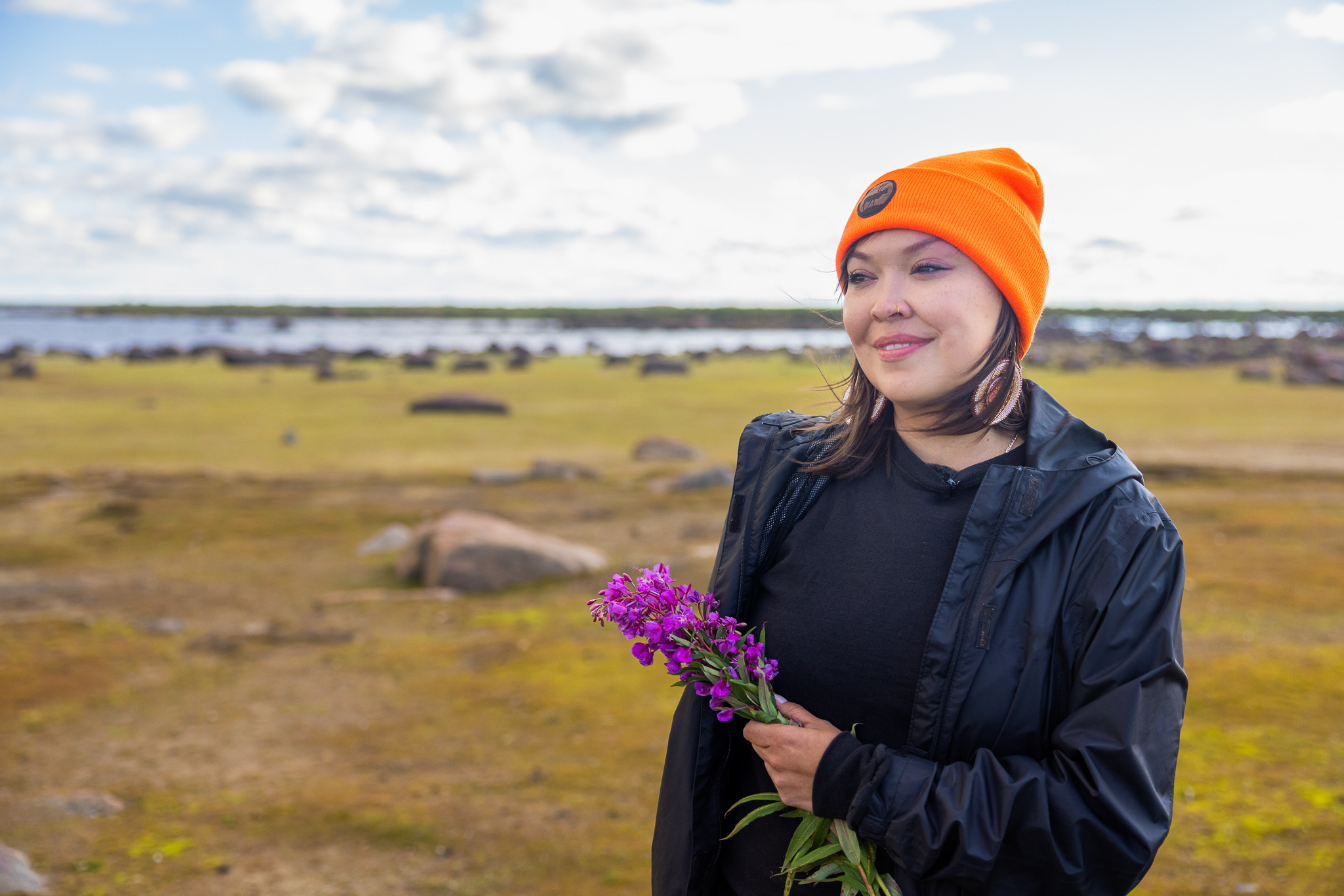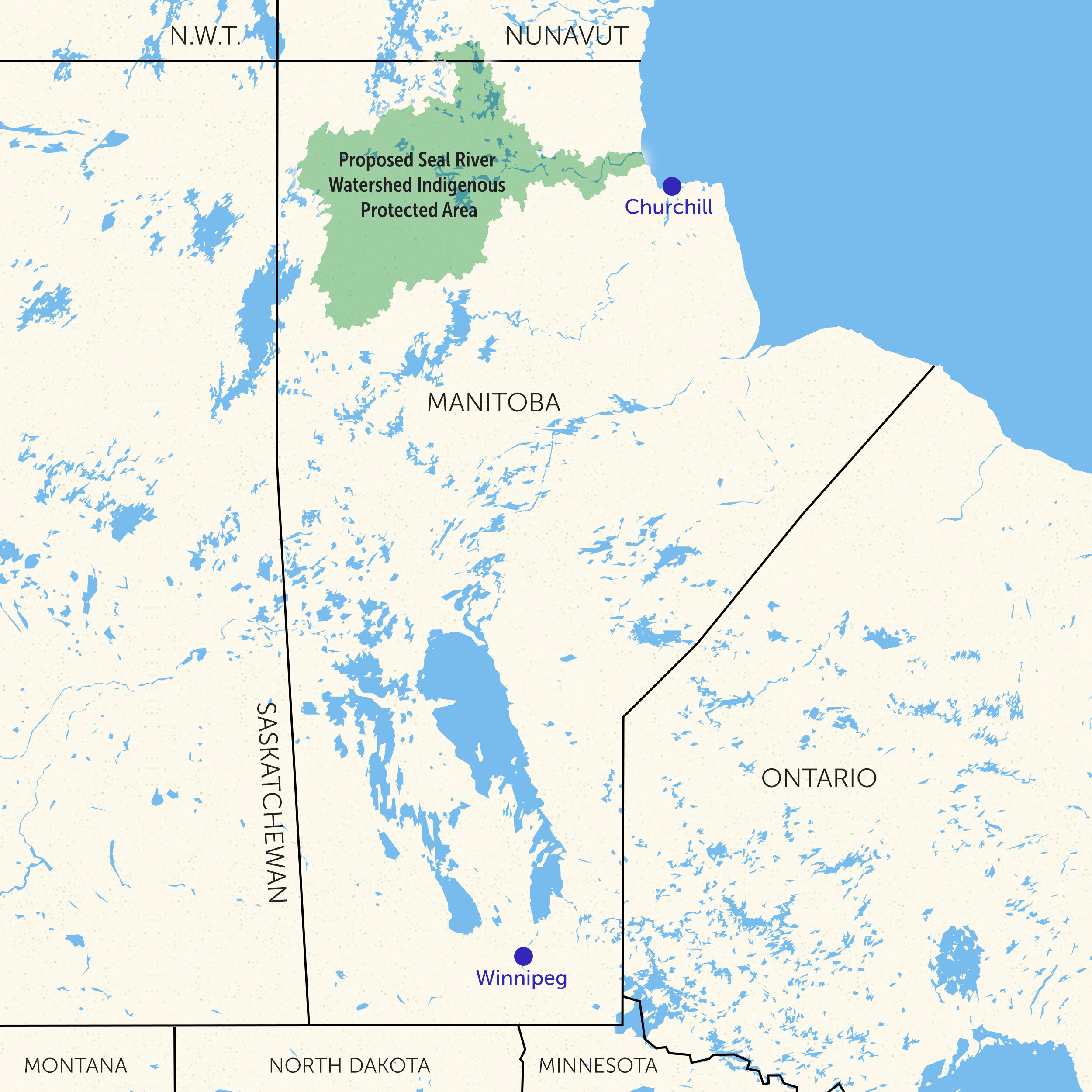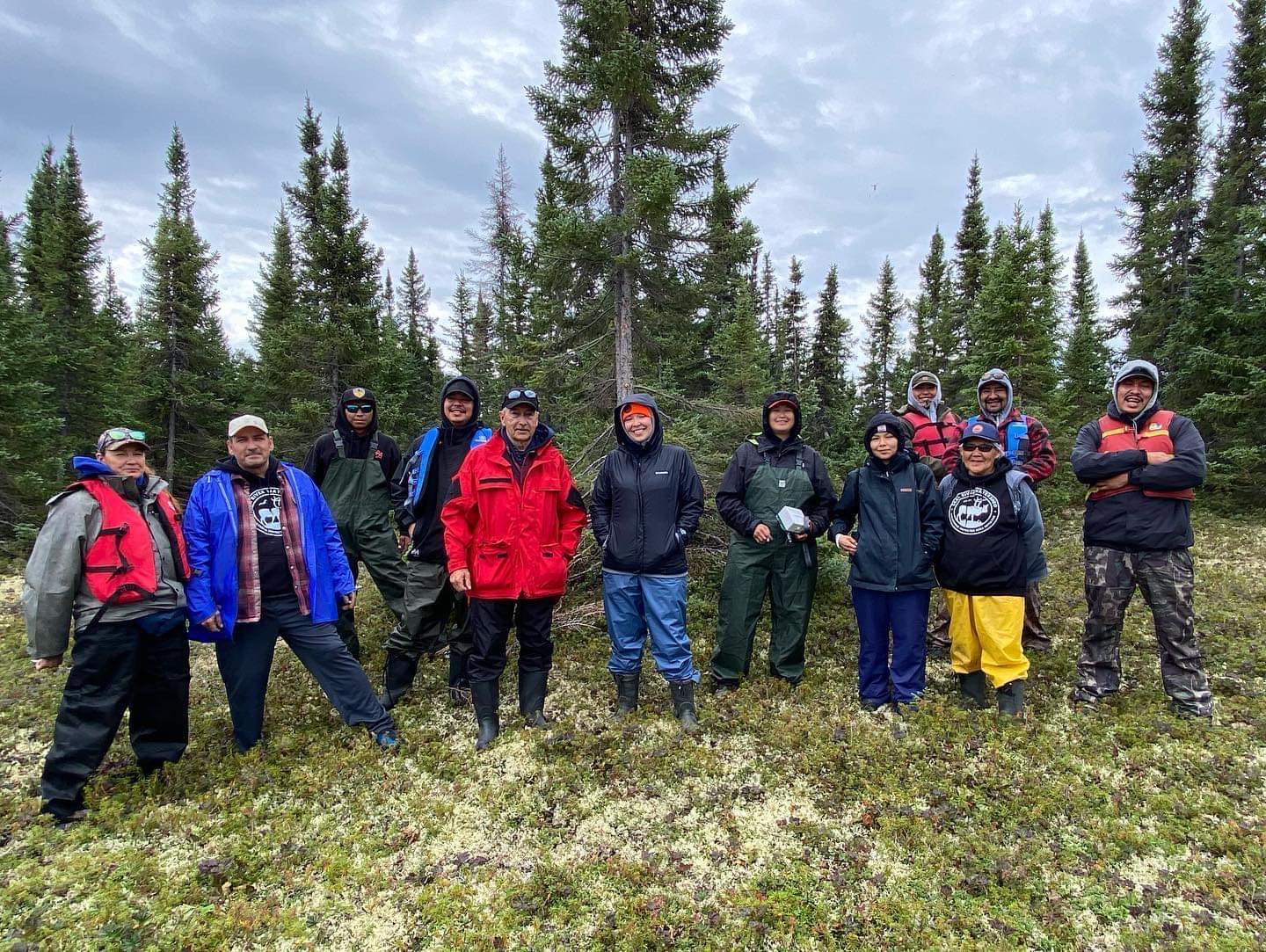
In a Nova Scotia research lab, the last hope for an ancient fish species
Racing against time, dwindling habitat and warming waters, scientists are trying to give this little-known...
“People never knew how special it was, before — this place we call home,” Stephanie Thorassie told me on Thursday morning, during a rare break from the COP15 biodiversity conference in Montreal.
Now, all eyes are on the Seal River Watershed — that place Thorassie calls home — as it takes one step closer towards being formally recognized as an Indigenous Protected and Conserved Area. If established, it would protect eight per cent of Manitoba, and habitat that is crucial for beluga whales, polar bears and, of course, seals.
The watershed is dotted with lakes and wetlands, and sandy hills left behind by glacial rivers, called eskers, snake across the land.
“It’s virtually untouched,” Thorassie said. “It’s pretty special.”
The watershed is located in the traditional lands of the Sayisi Dene, the Northlands Dene, the Barren Lands First Nation and the O-Pipon-Na-Piwin Cree Nation. Together they make up the Seal River Watershed Alliance, which has been pushing for the establishment of an Indigenous Protected and Conserved Area for years.
Ernie Bussidor, a member of the Sayisi Dene First Nation, began pushing for the protected area in 2016 and the alliance was founded in 2019, and received federal funding that year.
All of that hard work led to the announcement on Wednesday that Manitoba and the federal government will be supporting the alliance in undertaking a study to assess the feasibility of establishing the protected area. The next step is to sign a memorandum of understanding between the three levels of government to decide what will be included in the feasibility study.

“It’s great momentum,” Thorassie, who is from the Sayisi Dene community Tadoule Lake and executive director of the Seal River Watershed Alliance, said. “The federal and the provincial government are formally recognizing the work that we’ve been doing.”
“It’s a really great way to start this work, because the three years of late nights, long hours and heavy pushing that we’ve been doing is starting to show.”
The 50,000-square-kilometre protected area would preserve the Seal River as the last major undammed river in Manitoba. Up to 70 per cent of Manitoba’s wetlands have been lost or degraded, and most rivers have been diverted or altered by dams.
Thorassie said they’ve already done “a lot of homework” to prepare for this stage, including recently publishing a report that outlines the watershed’s ecological, social and cultural values.
The report outlines the area’s significance for culturally important species like barren-ground caribou, which the Committee on the Status of Endangered Wildlife in Canada lists as threatened. As well, the landscape stores a whopping 1.7 billion tonnes of carbon — about eight years’ worth of total greenhouse gas emissions in Canada. If that carbon was released, it would cause $314.5 billion in economic damages, according to the report.
The report estimated many values the watershed provides, including $192 million per year in value for conservation of species, $9.56 million in mental health services from visiting natural areas and recreation and $10.97 million per year in ecotourism revenue.

There are no specifics on the timeline or cost of the study yet — that will come after the memorandum of understanding is agreed upon.
Ninety per cent of feasibility studies in Manitoba have resulted in areas being protected, Ron Thiessen, executive director of the Canadian Parks and Wilderness Society’s Manitoba chapter, said
“Feasibility studies are a positive sign, as they signal interest and intent,” he explained.
Taking on the significant cost and resources required for this kind of study shows “a willingness of all parties to do the work needed to conserve nature and advance reconciliation,” he said.
Federal Minister of Environment and Climate Change Steven Guilbeault also said the feasibility study was an important step forward to establishing the protected area.
“This milestone demonstrates how much we can achieve to protect nature when we work together, advancing the goals of reconciliation,” he said in a press statement.
Thorassie spoke to The Narwhal on the phone from COP15, while she was doing Christmas shopping, her first time actually walking around Montreal amid her busy schedule. She’s given 10 presentations so far, with two more planned. She said the alliance and two levels of government were negotiating right up until the evening before the feasibility study was announced.
It’s a lot of work and requires being in spaces like COP15 — but she said she remains grounded focusing on the communities’ needs.
She brought up the experience of her community, Tadoule Lake, just one generation ago. The government forcibly moved the Sayisi Dene to Churchill in 1956, separating them from the land and caribou they relied on.
“We lost one-third of our community during the 17 years we lived in Churchill,” Enie Bussidor, a member of the Sayisi Dene First Nation and senior advisor for the Seal River Watershed Initiative, told The Narwhal in a previous interview. He was born in Churchill and only returned home later in life.
Healing from these experiences is top of mind for Thorassie as she does this work.
“We’ve been in situations where it’s outsiders making decisions for us,” she said. “Governments making decisions for people that they have no connection to causes real harm to people.”

But with this Indigenous Protected and Conserved Area, the communities’ leadership has been at the forefront of decision-making, and will continue to be. And to Thorassie, this protected area is centred in healing and the good of the community.
“All I can really think about is how can we change the narrative for people in the communities who are still really struggling to break free from the trauma bonds that hold them together?”
She said the other next steps are creating jobs and training so youth can take on those jobs — many youth who don’t see themselves taking on these “science-y” positions.
“It’s our job now to make sure that they can see themselves doing this work,” she said.
She’s hopeful and confident as they take this task on. The watershed alliance received federal funding for its Guardians program, which launched this year, and they hosted a firearms licencing course. Both adults and youth guardians took part. And the person who beat out everyone else? A youth from Northlands Denesuline First Nation.
“That five-foot-two, 17-year-old girl who’s shy and quiet and kind of sitting in the background, got the highest score on these two tests,” Thorassie said, her voice filled with pride and excitement.
“These young women that are coming, I think we have to watch out for them.”
She said this is the ultimate goal going forward: supporting youth with education and Traditional Knowledge to set them up as “forces to be reckoned with.”
For now, she’s excited to finish up COP15 and go home to Tadoule Lake.
“I want to go out on the snowmobile. I want to see the caribou … I want to see my grandma.”
“I am looking forward to going home and setting my feet back on the land that I’ve been so busy advocating for.”
Updated on Dec. 16, 2022, 1:00 p.m. PT: This story was updated to include the fact that Ernie Bussidor, a member of the Sayisi Dene First Nation, began pushing for the Seal River Watershed protected area in 2016 and the Seal River Watershed Alliance was founded in 2019. It was also updated to correct a typo in Ron Thiessen’s name.
Get the inside scoop on The Narwhal’s environment and climate reporting by signing up for our free newsletter. On March 17, federal Conservative Leader Pierre Poilievre...
Continue reading
Racing against time, dwindling habitat and warming waters, scientists are trying to give this little-known...

From investigative reporting to stunning photography, we’ve been recognized with four 2024 CAJ Awards nods...

The Narwhal is expanding its reach on video platforms like YouTube and TikTok. First up?...
